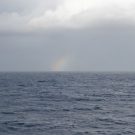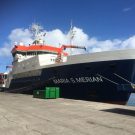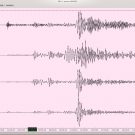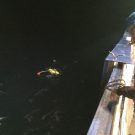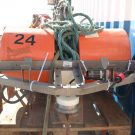Latitude: 34.882°S Longitude: 179.068°E Days at Sea: 32 In the last post, Karen mentioned the term ‚WOWing‘. The term is actually an abbreviation for ‘Waiting-On-Weather’ and means that the weather and/or the seas are too rough to continue with our operations. This happened already a few times during our Expedition, the last time on Thursday. […]
The life of a core
May 27, 2018 Latitude: 34° 52.52’S Longitude: 179°03.52’E Days at sea: 19 Let’s follow a core that gets on deck of the JOIDES Resolution. It has to endure a lot of procedures before it is allowed to relax in its d-tube, where it waits for shipping to the storage facility in Japan. After the core […]
Sustainable Drilling
Latitude: 34.882º S Longitude: 179.068º E Days at sea: 12 The last few days were quite successful. We managed to drill more than 200 metres into the northwestern rim of the Brothers caldera and retrieved some wonderful cores. Fresh lava for us igneous petrologists and vocanologists, altered rocks for our alteration specialists and sulphides for […]
At Site U1527 and drilling
May 10, 2018 Latitude: 34.867° S Longitude: 179.061° E Days at sea: 2 On Wednesday (May 9) morning, we left the port of Auckland and started our transit to Brothers Volcano. The seas were calm and the weather warm and sunny. Thus, the 24h transit was very smooth, there were no issues with seasickness and […]
On board.
May 6, 2018 Latitude: 36° 50.60’S Longitude: 174°46.80’E Days at sea: 0 Hello and welcome to the IODP Expedition 376 “Brothers Arc Flux” Blog May 6, the start of our expedition. Our staff scientist, Tobias Hoefig, picked us and the other scientists up at the hotel in Auckland and brought us to the Freyberg Wharf […]
From the Canary Islands to Crete: sailing the Mediterranean straits, Part II
Bottlenecks – part II (read part I here) In our final blog we will re-capture our journey through the Mediterranean as it is not very often that one gets to travel from one end almost to the other. The Mediterranean is unique because of its numerous passages and straits. These maritime bottlenecks also characterized our […]
From the Canary Islands to Crete: sailing the Mediterranean straits, Part I
Bottlenecks In our final blog we will re-capture our journey through the Mediterranean as it is not very often that one gets to travel from one end almost to the other. The Mediterranean is unique because of its numerous passages and straits. These maritime bottlenecks also characterized our journey, but luckily mproved to be the […]
Harvesting
During our last days here in our working area we are shifting it into gear, because it is harvesting time! Finally we will have a look at our data coming back from the sea floor – we all have been waiting for this very moment since weeks now (and some of us since a few […]
To fish in muddy waters…
Doing science at sea has its very own rules – just like the German soccer cup or DFB-Pokal, for which the saying goes: The cup makes its own rules. The teams dedicate many months to a thorough preparation, all options are evaluated, everything is double-checked, every tactical variation is considered and at the end everything […]
Ocean bottom What??
If you want to get an image of the Alps, you need seismometers surrounding the area. But how do you get the seismometers to work at the bottom of the sea? And how do you get them back? To explain this, we invite you to a virtual journey on board of the research vessel Maria […]
